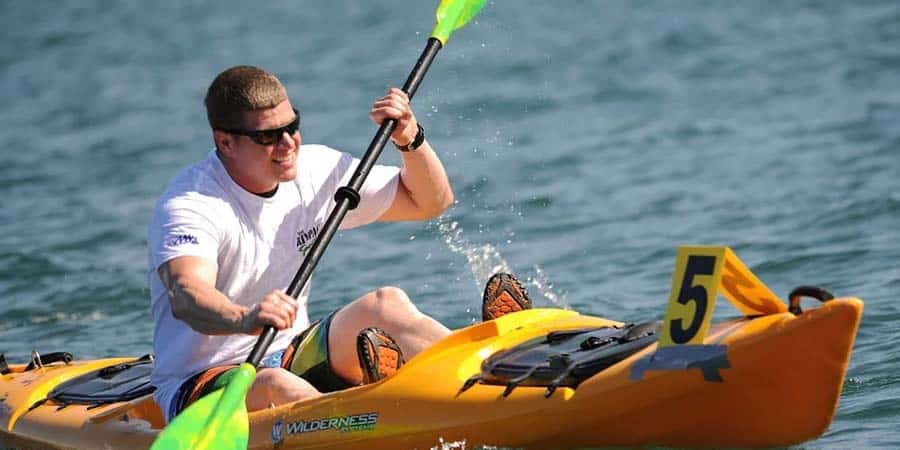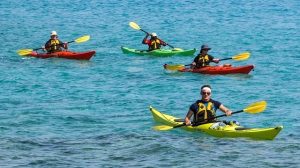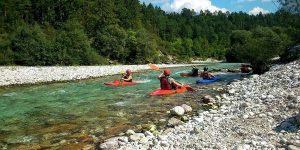Now you know all the gear you need to start kayaking.
But, there’s not just one type of kayaking. Which type is suitable for you?
The type of kayak you need depends on how serious you are about the hobby, and the types of water you plan to paddle on.
Jump To Section
1. Touring
If you plan to paddle for long distances, maybe for travelling, touring could be for you.
The area in the kayak for the paddler isn’t sealed, so you need to bear that in mind if flipped. But, there’s usually a sealed area behind the bulkhead to store necessities.
Due to the fact touring kayaks are big and heavy, they are usually used on open and predictable waters.
2. Sea Kayaking
If you plan to go kayaking at sea, you’re going to encounter some seriously choppy waters. So, unlike a touring kayak (although they look similar), you’ll have two sealed bulkheads.
Sea kayaks are long and thin (sometimes up to 20 feet long) which allows them to blast through choppy water at speed.
Being out at sea isn’t a joke, you’ll need to get some tutoring from a professional before going in your own groups.
And, due to their weight, you’ll need some serious power and stamina to keep up to speed.
3. Whitewater Kayaking
Whitewater kayaks are typically much smaller. They’re designed to tackle rough and rocky stretches of streams, creeks and even rivers.
They are designed to be nimble. But, that comes at a cost. Don’t expect to be able to keep up with touring kayaks if you’re venturing down calm waters like a canal.
Whitewater is unpredictable, fast and dangerous. If you want adrenaline; head for the whitewater!
4. Surf Kayaking
Surf kayaking utilises a similar boat to whitewater kayaks. And, like whitewater kayaking, it can be extremely dangerous.
Essentially, your kayak is your surfboard, and you’ll be using your paddle to keep on the surf (or flip yourself if you capsize).
Whitewater relies on control and precision. Surfing a kayak is similar, but you’ll need something else; bursts of power.
Like normal surfing, you’ll need to paddle hard and fast to get past incoming waves when you venture out to catch a swell.
And, when you see a swell, you’ll need to have that burst of power to catch it; it’s not as easy as some kayakers make it look!
- Next: How To Kayak
- Previous: Kayaking Essentials – The Gear You’ll Need To Start Kayaking







